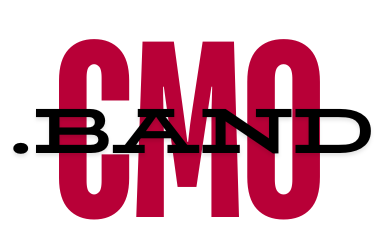- Exploring BCG’s Go-to-Market Strategy: A Blueprint for Success in Today’s Competitive Landscape
- Understanding BCG’s Go-to-Market Strategy
- Market Segmentation and Customer Insights
- Strategic Positioning and Value Proposition
- Integrated Marketing and Sales Alignment
- Leveraging Technology for Competitive Advantage
- Continuous Optimization and Adaptation
- Implementing BCG’s Go-to-Market Strategy
Exploring BCG’s Go-to-Market Strategy: A Blueprint for Success in Today’s Competitive Landscape
In the dynamic world of business, companies are constantly seeking innovative strategies to stay ahead of the competition. One such strategy that has garnered significant attention is the Go-to-Market (GTM) strategy developed by Boston Consulting Group (BCG). As a digital marketing expert, I find BCG’s approach not only intriguing but also exceptionally effective in navigating the complexities of today’s market environments. This post delves into the core aspects of BCG’s GTM strategy and explores how businesses can leverage these insights for competitive advantage.
Understanding BCG’s Go-to-Market Strategy
At its core, BCG’s GTM strategy is about aligning a company’s business model with its market environment and customer needs, ensuring that every aspect of the business is geared towards market penetration and success. This strategy is comprehensive, encompassing market analysis, product positioning, marketing mix, and sales strategy. It’s a holistic approach that ensures all elements are working in unison to achieve the business objectives.
Market Segmentation and Customer Insights
One of the pillars of BCG’s GTM strategy is a deep understanding of market segmentation and customer insights. In today’s data-driven era, understanding who your customers are, what they need, and how they want to interact with your products or services is crucial. BCG emphasizes the use of advanced analytics and customer data to create detailed customer personas and segmentation. This allows companies to tailor their offerings and marketing messages to meet the specific needs and preferences of different customer groups, thereby increasing relevance and engagement.
Strategic Positioning and Value Proposition
Another critical element in the GTM strategy is the strategic positioning of the product or service in the market. BCG advocates for a clear and compelling value proposition that differentiates the product from competitors. This involves not just highlighting the features of the product, but more importantly, articulating the distinct benefits that it offers to customers. Effective positioning addresses the customer’s pain points and demonstrates how the product or service provides a solution, thereby creating a strong incentive for customers to choose it over others.
Integrated Marketing and Sales Alignment
In the digital age, integration between marketing and sales is more important than ever. BCG’s GTM strategy stresses the importance of these two functions working closely together to ensure a seamless customer journey from awareness to purchase. This involves coordinated efforts across multiple channels, both online and offline. Digital marketing plays a pivotal role here, leveraging tools such as SEO, content marketing, social media, and email campaigns to generate leads and build brand awareness, while sales teams work on converting these leads into customers through personalized outreach and engagement.
Leveraging Technology for Competitive Advantage
Technology is a key enabler in BCG’s GTM strategy. In today’s market, digital tools and platforms can provide businesses with a significant competitive edge. From CRM systems that help manage customer relationships to analytics platforms that provide insights into market trends and consumer behavior, technology can enhance every aspect of the GTM strategy. BCG encourages businesses to invest in the right technologies that align with their specific goals and needs, ensuring that they are not just keeping up with the competition, but staying ahead.
Continuous Optimization and Adaptation
Finally, BCG’s GTM strategy is not a set-it-and-forget-it plan. It requires continuous monitoring, testing, and adaptation to respond to changing market conditions and customer needs. This dynamic approach ensures that businesses remain agile and can quickly capitalize on new opportunities or address emerging challenges. Regularly revisiting and refining the GTM strategy based on real-time data and feedback is crucial for sustained success.
Implementing BCG’s Go-to-Market Strategy
For businesses looking to implement BCG’s GTM strategy, the journey begins with a thorough market analysis and an understanding of the target customer base. This is followed by crafting a differentiated value proposition and aligning marketing and sales efforts to effectively reach and convert customers. Investing in technology and fostering a culture of continuous improvement are also vital steps in this process.
In today’s competitive landscape, BCG’s GTM strategy offers a robust framework for businesses aiming to achieve market success. By focusing on customer insights, strategic positioning, integrated marketing and sales, technology leverage, and continuous optimization, companies can develop a powerful approach to market entry and growth. As we navigate the complexities of modern markets, this strategy serves as a blueprint for building a resilient and successful business in any industry.

A seasoned digital marketing strategist with over 8 years of experience across various areas of digital marketing, including SEO, SMM, PPC, content marketing, and email marketing. Specializes in transforming B2B, B2C, e-commerce, and SaaS businesses by creating effective go-to-market strategies and building thriving digital ecosystems. Known for a data-driven approach to optimizing campaigns and maximizing results.
“If your business is looking to scale or in need of a fresh perspective, feel free to contact”.





